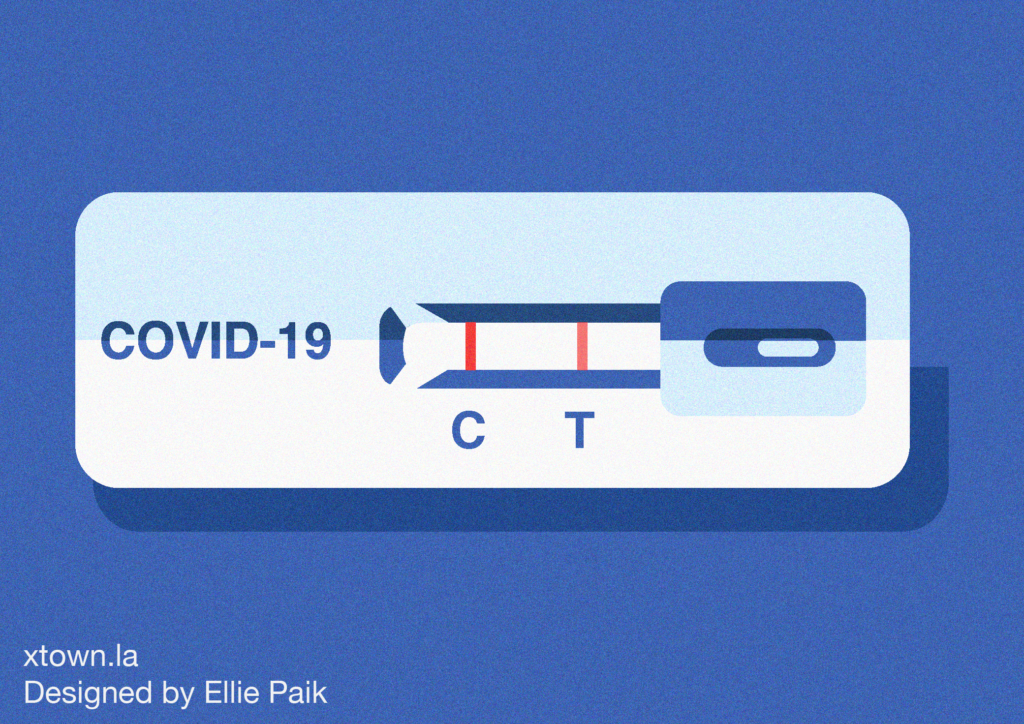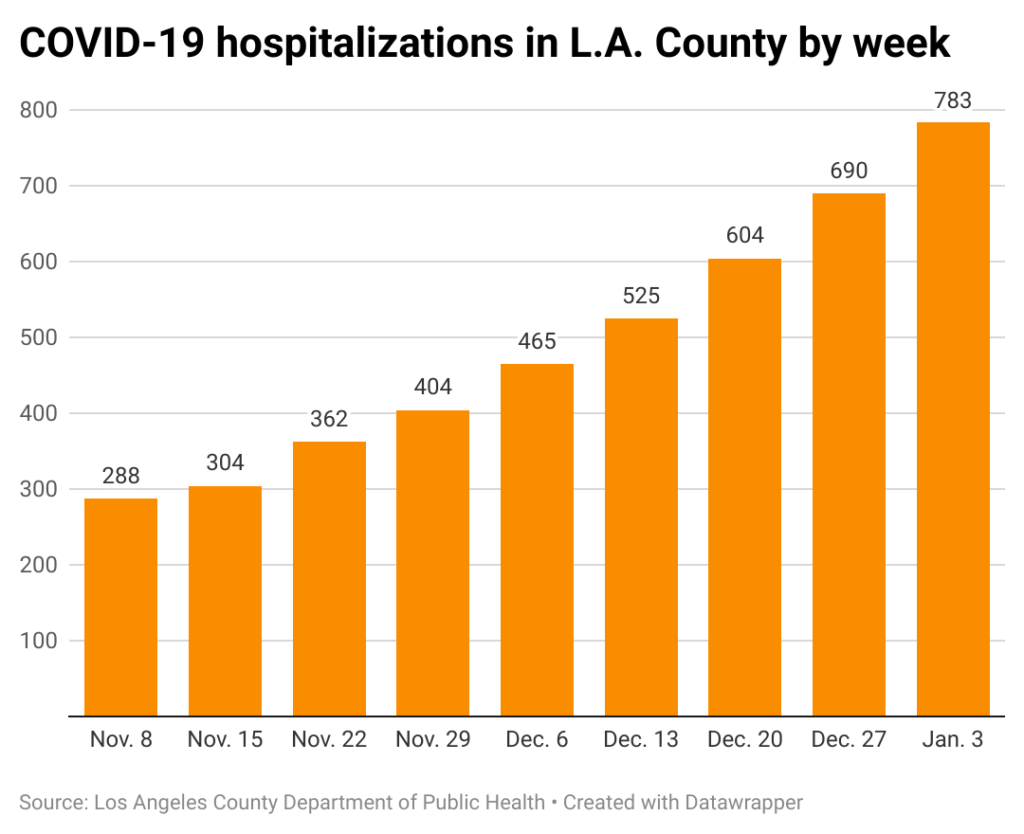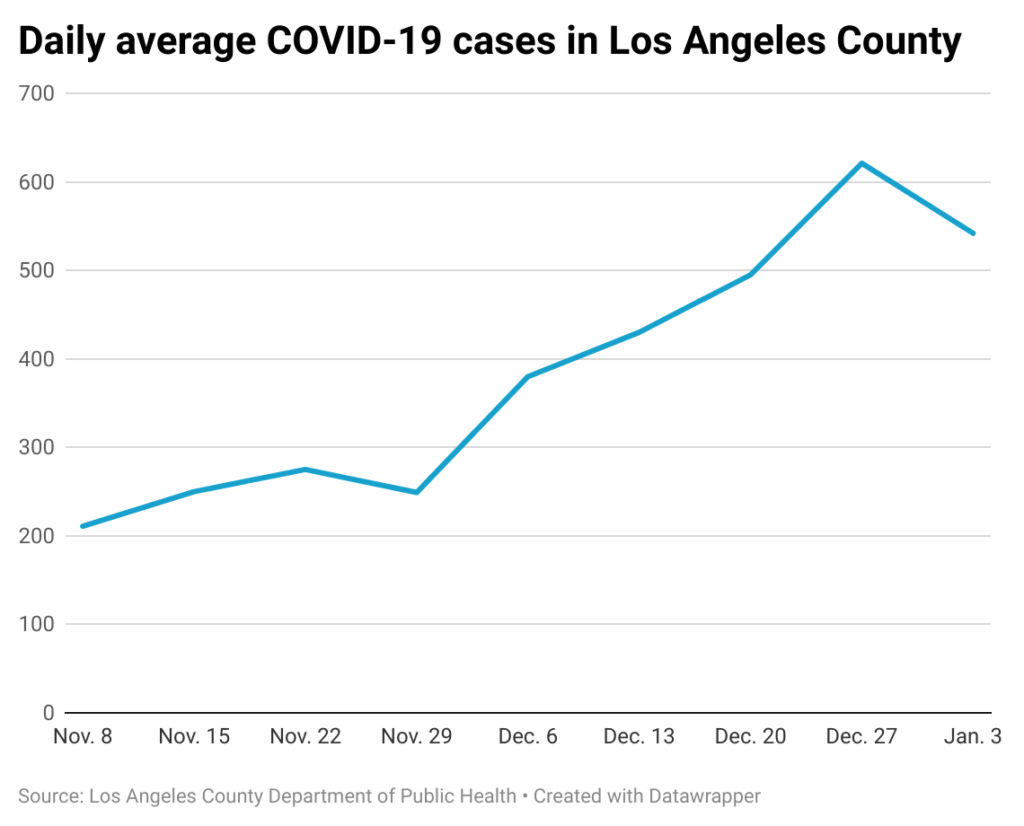There’s more concern about COVID in Los Angeles

As the new year begins, not everyone is cheery. Although the situation was much worse early in the pandemic, Los Angeles is experiencing an increase in some key COVID-19 metrics, driven by the spread of the variant JN.1. There is also concern about seasonal flu.
The most significant rise involves hospitalizations. According to the Los Angeles County Department of Public Health, in the week ending Jan. 3 there were 783 coronavirus patients in area hospitals. That is up 13.5% from the previous week. It is also the greatest number of people receiving medical care in nearly a year.
The figure has increased for eight consecutive weeks. On Nov. 8, just 288 people with COVID were hospitalized in the county.

The county recently moved into the Centers for Disease Control and Prevention’s “Medium” level of hospital admissions. That means healthcare workers in licensed facilities that provide inpatient care must don masks. Visitors are also required to mask up, regardless of their COVID-19 status.
[Get crime, housing and other stats about where you live with the Crosstown Neighborhood Newsletter]
Hospitalizations rose even as infections decreased. According to the Department of Public Health, on Jan. 3 the average daily case count was 542, a modest decline from 621 the prior week.

Yet this does not necessarily mean the picture is improving. The Department of Public Health’s Thursday briefing stated, “There was a lower number of reportable tests conducted for the most recent week, likely influenced by the holidays. Case counts are also an undercount due to the large number of home test results that are not reported.”
Additionally, the level of COVID-19 detected in wastewater is rising. Current concentrations are at 49% of last winter’s peak. In the final three weeks of 2023 the level was no more than 39% of the previous year’s high.
According to the Department of Public Health, “Wastewater concentrations provide a more complete picture of COVID-19 transmission levels than reported cases alone.”
Still urging shots
Health authorities continue to urge people to get the latest vaccine, noting that in addition to protecting against infection, it can help prevent Long COVID. Shots are free at many locations. Anyone needing help with obtaining a vaccination can contact the Public Health Call Center at (833) 540-0473.
Although shots are widely available, according to the state’s vaccine dashboard just 12% of California’s population is considered up to date. That works out to fewer than 5 million people.
The most active group is those over 65; approximately 30.6% of statewide seniors have received the new vaccine.
The overall vaccination rate in Los Angeles for the newest dose is about 10%, or just over 1 million residents, according to Department of Public Health tracking. As with the state, the rate is highest among seniors, with 25% taking the shot.
Although COVID-19 continues to dominate headlines, influenza is also spreading in the region. According to a Department of Public Health dashboard that tracks respiratory diseases, on Dec. 22, 2023 (the most recent day for which data was available), the seven-day average of new influenza patients in area hospitals was 87. The peak in the previous flu season was 82.
How we did it: We analyzed coronavirus data through Jan. 3, 2024, related to new cases, deaths, hospitalizations and vaccinations provided by the Los Angeles County Department of Public Health. The data only reflects cases reported to the department, and not how many cases actually occurred. We also examined county respiratory diseases data and state of California vaccine data.
Learn more about our data here. Any questions? Email askus@xtown.la.






